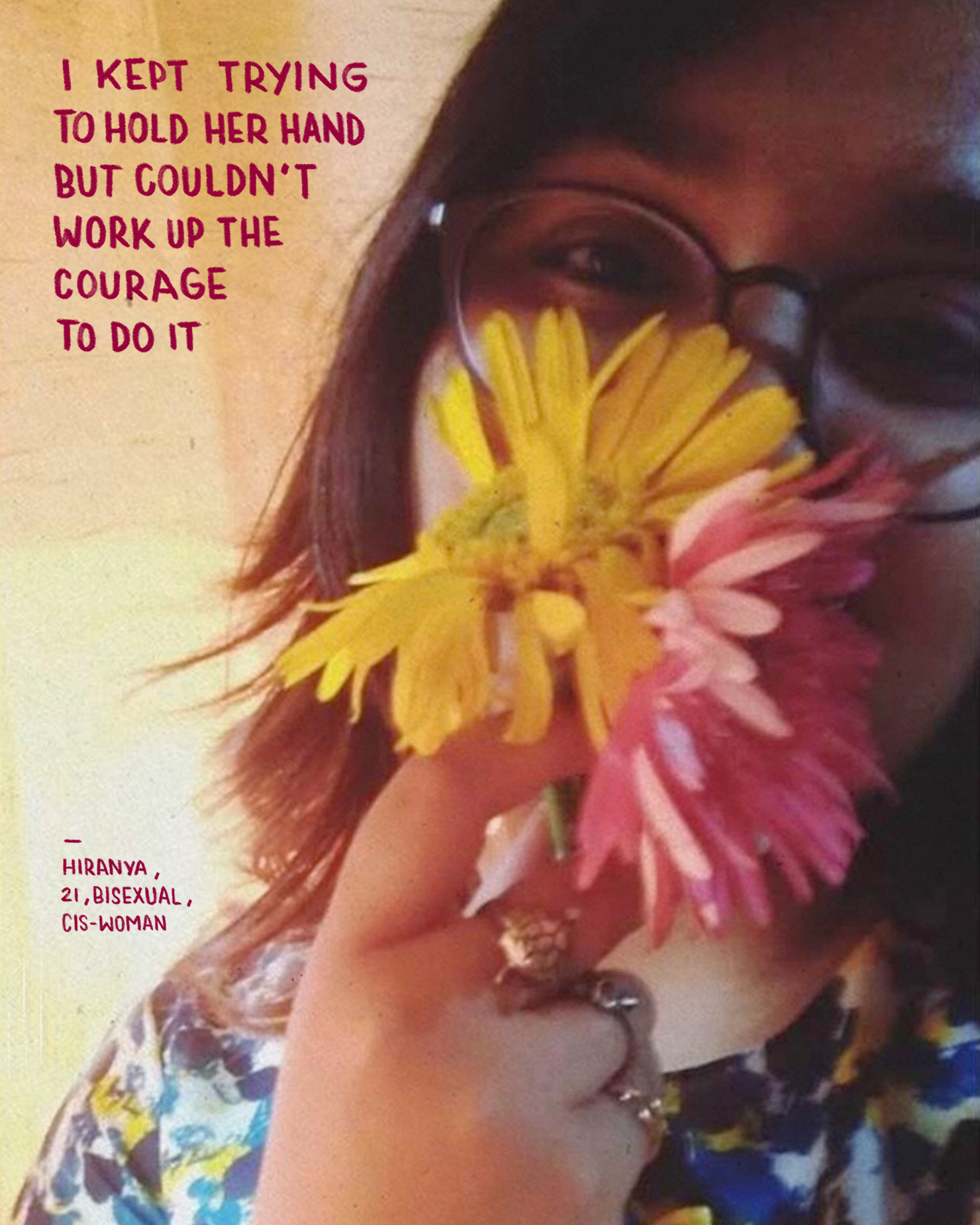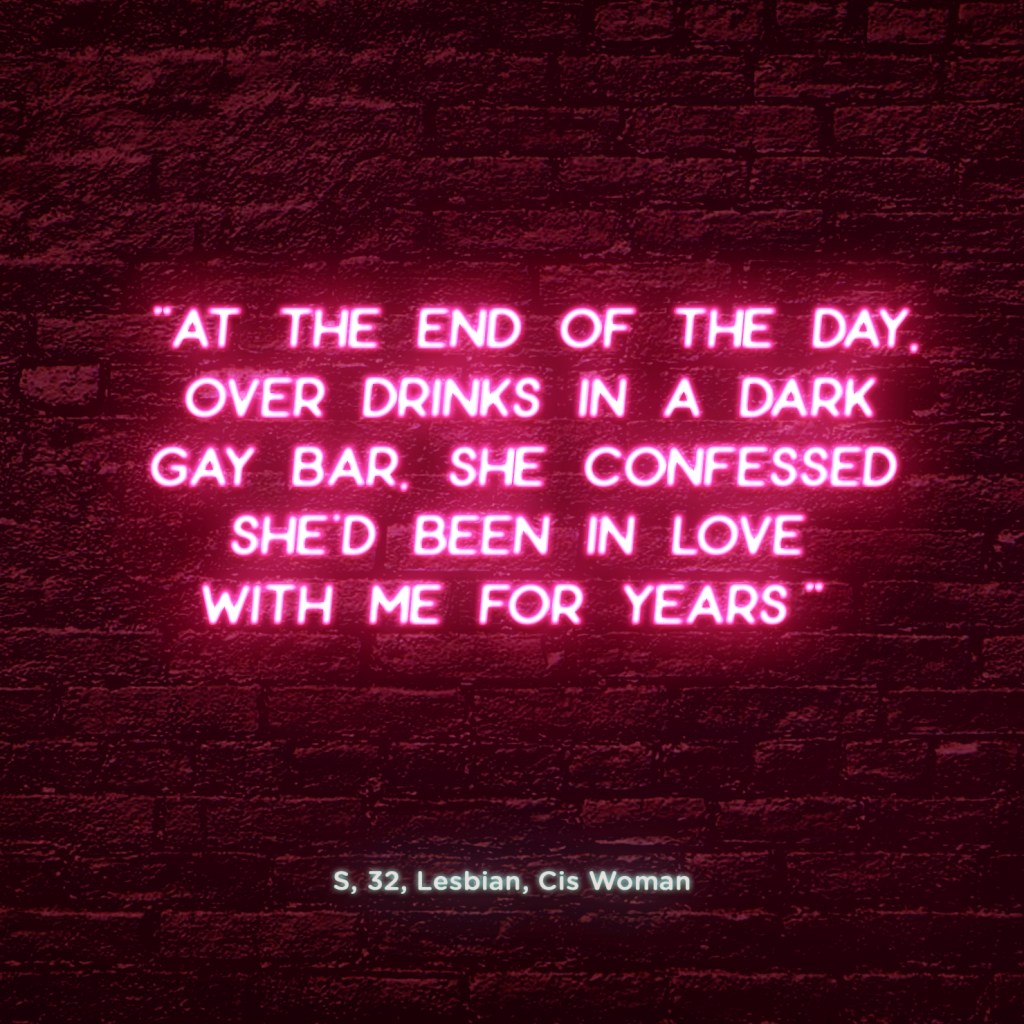Do you remember your first date? The anxiety, the trepidation, the butterflies? The one that reduced you to a blushing mess, or led to awkward confessions? Last year, when queer platform Gaysi’s Sakshi Juneja sat down with illustrator Priya Dali along with Tinder representatives, they thought of this ubiquitous experience. But while the prototype of the first date still sees a heterosexual man and woman, in this case, the dates were between queer people. “This is because in India, especially, there is so much gap in terms of filling up queer stories,” Juneja tells VICE. “No matter how many entities or stories come in, it still wouldn’t be enough. We have so much catching up to do, with the genders, sexualities, the intersectionalities, and different backgrounds people come from.”
And that is how the Museum of Queer First Dates came up. In a world where people (especially the young and queer) are finding their voice through the infinite possibilities of the digital space, the Museum is a platform in which ephemeral queer experiences, which have often been ignored or buried, become lasting memories. This archive, so to speak, turns simple scenes of a meet-cute into significant documentation.
Videos by VICE


“As a queer woman, I know how much, in recent years, we have used digital spaces—like Facebook (in my time) and now Instagram or Twitter—to connect to other queer people,” adds Juneja. “That’s how we thought of creating a museum of these narratives. It’s interesting to see how people are navigating queer lives, in urban or non-urban setups, using different digital features.”

The photos are accompanied by short notes by queer Indians, which have been procured through a questionnaire on their Instagram page. These are then interspersed with either image provided by the individuals or illustrations by Dali. “First dates are something so sweet, but people’s experience can be so diverse,” says Juneja. The project also includes stories with no “happy” endings. “It’s not just about happy dates, or happily ever afters, but all kinds of dates.”
In India, conversations around dating as a queer person opened up only after 2018 when the draconian Section 377 of the Indian Penal Code was read down. This opened up a can of worms, mostly in the form of deeply-rooted stigma and prejudices against the LGBTQ people. Still, stories of violence and discrimination surface every now and then. The simple act of reaching out to love or dating, therefore, is a rather turbulent terrain for a queer person in India, where they constantly struggle to feel safe.

Shattering traditional dating cultures—that are usually heterosexual in representation—is also a significant part of the campaign, and it amplifies narratives that have been excluded from regular conversations for so long. The project kicked off in February 2020, and will soon open up to non-Indian contributors and stories as well. But the idea, say the founders, will remain flexible. “It’s not like we don’t hear these stories. But there’s always a newness to every story here,” says Juneja.
Why call it a museum, though, we ask. “Because by design, this digital space mimics a museum. You walk in, find stuff, go through various aspects and representations of a history or culture,” says Juneja. As one scrolls through one story after another, you see different stories—short, sweet, sometimes awkward, sometimes gushing, some with names, some anonymous—but they all speak the same weirdly wonderful language of a first date.
Follow Pallavi Pundir on Twitter.
More
From VICE
-

Screenshot: Shaun Cichacki -

Screenshot: Shaun Cichacki -

Screenshot: Sega -

Jesus, Mary Magdalene, Judas Iscariot, and some fourth wheel at the Last Supper (All photos by Paige Taylor White)
